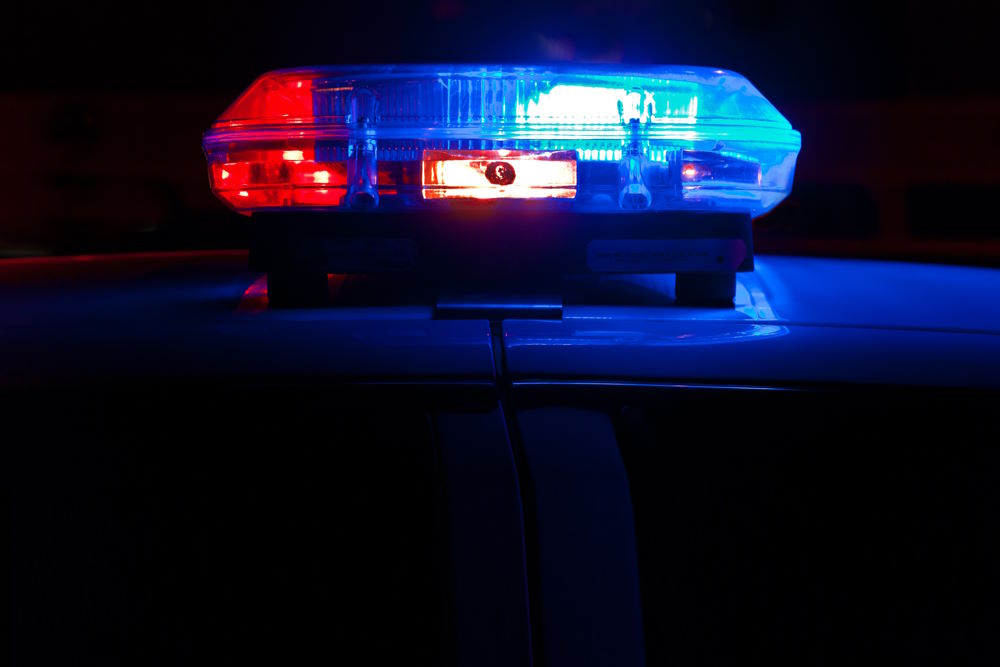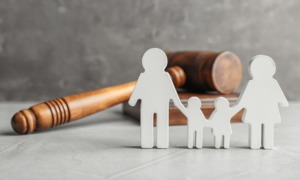Baltimore’s top elected official vowed to reinstate a curfew last month after a 14-year-old and 16-year-old were shot and injured — allegedly by a teen wielding an untraceable gun made from a kit — while police were dispersing a crowd of 200 youth.
“I want everyone to hear me and hear me clearly,” Mayor Brandon Scott said during a press conference regarding youth-on-youth gun violence, amid what, he added, was the city’s overall drop in gun and other violent crimes. “We are going back to the old days. We will be enforcing a youth curfew as we move into the latter spring and summer months.”
Anyone 14 years and younger must be off the streets by 9 p.m. nightly as Baltimore resurrects a youth curfew it last imposed in 2014.
In the 1980s and early 1990s, youth curfews gained popularity as the nation grappled with that era’s record-setting crime. In recent years, as youth homicides have risen — homicide is the third leading cause of death among 10- through 24-year-olds — the National Youth Rights Association has counted 400 towns, cities, counties and states with youth curfews.
Despite curfews’ appeal to some, a January 2023 Coalition for Juvenile Justice analysis cited prior research suggesting that such restrictions missed their intended goal of curbing youth crime. They did pare, for example, automobile injuries among teens. But the coalition, while listing several cities that enacted curfews in 2022, also noted how Austin, Texas, ended a curfew in 2017, calling it ineffective.
So far, in 2023, in addition to Baltimore, curfews have been enacted or extended in cities ranging from Vicksburg, Mississippi, where the mayor pushed for one in response to the February gun death of a 13-year-old, to Daytona Beach, Florida, where residents expressed concern about spring break crowds becoming unwieldy.
Mike Males, a senior researcher at the San Francisco-based Center on Juvenile and Criminal Justice, said the ongoing popularity of curfews is baffling.
“I don’t understand it because they never really work,” Males said. “It’s sad that public officials can’t come up with something new.”
‘Just a tool in a toolbox’
Blakely, Georgia, Police Chief Will Caudill said that the city of 5,300 has had a youth curfew for longer than he can pinpoint. And last July, amid a spike in gun violence, Mayor Travis Wimbush implemented an emergency curfew, not just for young people, but for all residents. Wimbush did not respond to repeated interview requests.
Caudill said he had no evidence that the youth curfew has been effective. He called it “just a tool in our toolbox.”
“Nothing good,” he added, “really comes about after midnight, at least [not] in small towns like this.”
“Nothing good really comes about after midnight, at least [not] in small towns like this.”
Blakely, Georgia, Police Chief Will Caudill
Parents, argues criminal justice researcher Males, should be in charge of deciding whether their children are allowed out at night. His own study, published in Criminal Justice Policy Review in 2000, found that Vernon, Connecticut, after adopting a curfew in 1994 and, over a four-year span, cited more than 400 minors who overwhelmingly were, among other legal activities, were at sports events, movies, jobs and restaurants. The town actually had a harder time reducing crime than other cities, Males added.
“In effect, the curfew took law-abiding youths off the street,” Males said.
Safety in numbers is “a long tenet of urban literature,” he continued. “What you want is more people on the street because that leads to safer spaces.”
Mississippi town’s gun thefts increased amid curfew
Guns being stolen from unlocked automobiles was the lapse in safety prompting Starkville, Mississippi, Mayor D. Lynn Spruill to initiate a midnight to 5 a.m. curfew in 2021 for youth in that town of 24,000. In an August 2022 presentation to the Starkville Board of Aldermen, Police Chief Mark Ballard said vehicular firearm thefts actually increased amid that curfew. Shortly after that presentation, the board of aldermen unanimously approved another year of the curfew.
Three Starkville aldermen said in 2022 interviews that they had not read studies suggesting that curfews were relatively ineffective and did not plan to ask the police chief about that research.
In Maryland, last September, Prince George’s County Executive Angela Alsobrooks reinstated a curfew, initially aiming for it to last for 30 days but extending it through December. Melissa Pryce, a public defender, was among those upset with that move.
“No one is going to the root cause of the [youth crime] problem, which is the home,” Pryce said. “It’s a systemic problem and it’s not going to be solved by any curfew. I don’t know why no one wants to have real conversations.”
“It’s a systemic problem and it’s not going to be solved by any curfew. I don’t know why no one wants to have real conversations.”
Melissa Pryce, public defender
County leaders declined last year to be interviewed for this news story.
Next door to Prince George’s, the American Civil Liberties Union had twice sued the District of Columbia over its curfew, successfully preventing a proposed curfew from taking effect in 1989 but failing to beat back 1995’s enactment of D.C.’s Juvenile Curfew Act, which remains on the books.
What’s lacking, overall, for youth in D.C., which remains predominantly Black and divided by class, with wealthy whites far outnumbering wealthy Blacks, are the sorts of options available to children of affluence, said Art Spitzer, senior legal counsel for the ACLU’s D.C. affiliate. Affluent areas are more likely to have the kinds of afternoon and evening activities that lessen youth crime and, thereby, the need for a curfew, he said.
“Somebody who lives in public housing doesn’t have those alternatives on a hot summer night,” he said. “Maybe you live in a small apartment with people you don’t necessarily want to spend your time with. There’s nothing wrong with hanging out on the sidewalk talking to your friends.”
As Baltimore’s mayor announced plans to reinstate that city’s curfew, he noted other endeavors, including Memorial Day weekend’s slated opening of the city’s youth activity centers, putting 7,000 youth on the city’s summer employment payroll and other efforts.
“Bringing Baltimore’s curfew back is about providing our young people with resources and ensuring they have a safe space during the summer months,” Scott said in an April press conference recorded by WALB-TV. “ … We will do our part to make sure we protect our young people … We need not just our community organizations and professionals [but] everyone to work with the young people.”
He continued: “This is a message to families who have young people: We need you, too. I should not be talking to 10- and 11-year-olds on Pratt Street after a shooting … and they don’t know where their parent is. That happened last night. We can’t be a city, we won’t be a city where that happens. ”
Some prior research favored curfews
Some officials, including Ballard, the Mississippi police chief, have justified youth curfews by pointing to a 2011 study by Patrick Kline, then a graduate student at the University of California, Berkeley. Now an economics professor on that campus, Kline previously concluded that juvenile curfews helped reduce serious crimes in the 1990s. Countering that assertion, the Center for Juvenile and Crime Justice’s Males and others have called Kline’s findings flawed because they didn’t take into account similar crime declines, during the same period, in cities without curfews.
Kline said his dissertation did take national trends into account, but admitted it’s unclear how much of an effect curfews had on fighting crime. Kline’s paper included opposing quotations about curfews, including one by Geoffrey Canada, a MacArthur Foundation “genius grant” winner and Harlem Children’s Zone executive director, calling them “an invitation to trouble.”
Nevertheless, Kline said he’s confident cities are safer with curfews than without: “It’s fair to say that these policies likely do something in terms of reducing crime.”
Supporters of curfews say they feel safer with curfews in place, regardless of what the data suggest.
“I’m not opposed to curfews,” said Jeffrey Campbell, executive director of Chicago Youth Programs, which runs educational, cultural and other initiatives. “I really believe young people shouldn’t be out after a certain time anyway.”
Curfew-breaking minorities may be cited more often
Low-income children and youths of color consistently get cited for curfew violations in Louisville, Kentucky, said Joan Byer, a retired family court judge in that city. Rather than punishing youths and their families by ticketing them, communities should focus more on matching the youth in question with appropriate social services and other support to youth, she said.
“We never ask, we always assume,” Byer said. “The assumption always is you’re out here making trouble … The question should be ‘Why are you here and what can we do to help?’”
Whatever the answers to those questions, communities should be spending more money on youth activities immediately after school, when most youth crimes happen, rather than on law enforcement, said attorney Nikole Xarhoulacos, who manages the children and family law division of the Montgomery County, Ohio, public defender’s office. The county seat, Dayton, has had a youth curfew since 1995.
“Violence isn’t limited through a curfew. It’s limited through an equitable system that educates people.”
Jeremaih Sims III
“It’s when kids don’t have anything to do that these crimes occur,” said Xarhoulacos, a former juvenile court magistrate, whose decisions must be approved by a judge. “I don’t know how curfews benefit our kids or our communities.”
They do have their costs. Depending on the law and location, some curfew violators get no official, penalizing citation. Others’ parents get fined.
The financial toll is one thing. But, opponents say, curfews exact other prices. Even brief encounters with police can be traumatizing and can escalate quickly.
“I worry about it any time of day,” said Richard Moss, a volunteer worker with youth and dean of fine arts, humanities and social sciences at the University of Arkansas’ Pulaski Technical College in North Little Rock, which has a curfew. “Any police interaction can go one of two ways.”
Former Pulaski student Jeremaih Sims III, 27, said he didn’t even realize neighboring Little Rock, Ark., had a curfew when he was growing up there. Troublemakers are going to be troublemakers whether a city has a curfew or not, he said.
“Nobody’s going to follow that,” Sims said. “Violence isn’t limited through a curfew. It’s limited through an equitable system that educates people.”
***
Chicago-based journalist Matt Krupnick covers inequality, education and other topics.
































